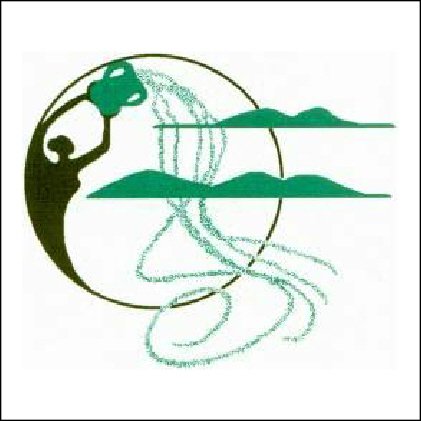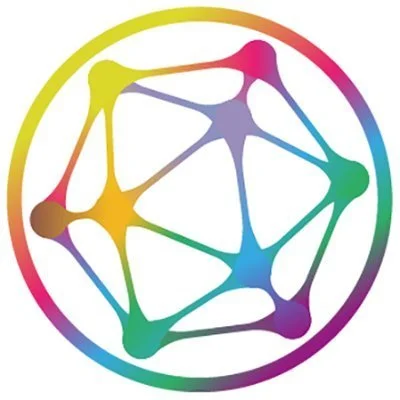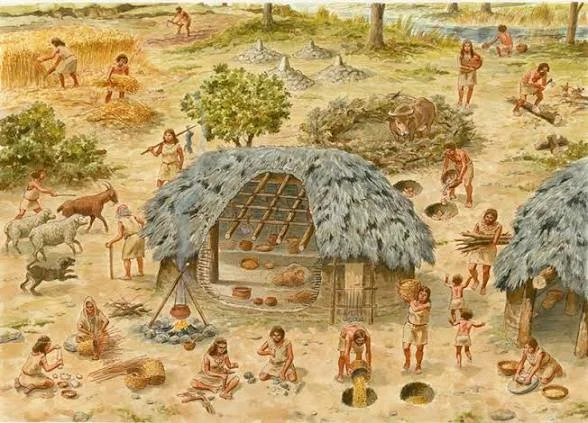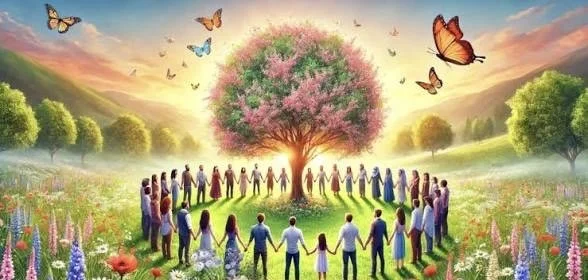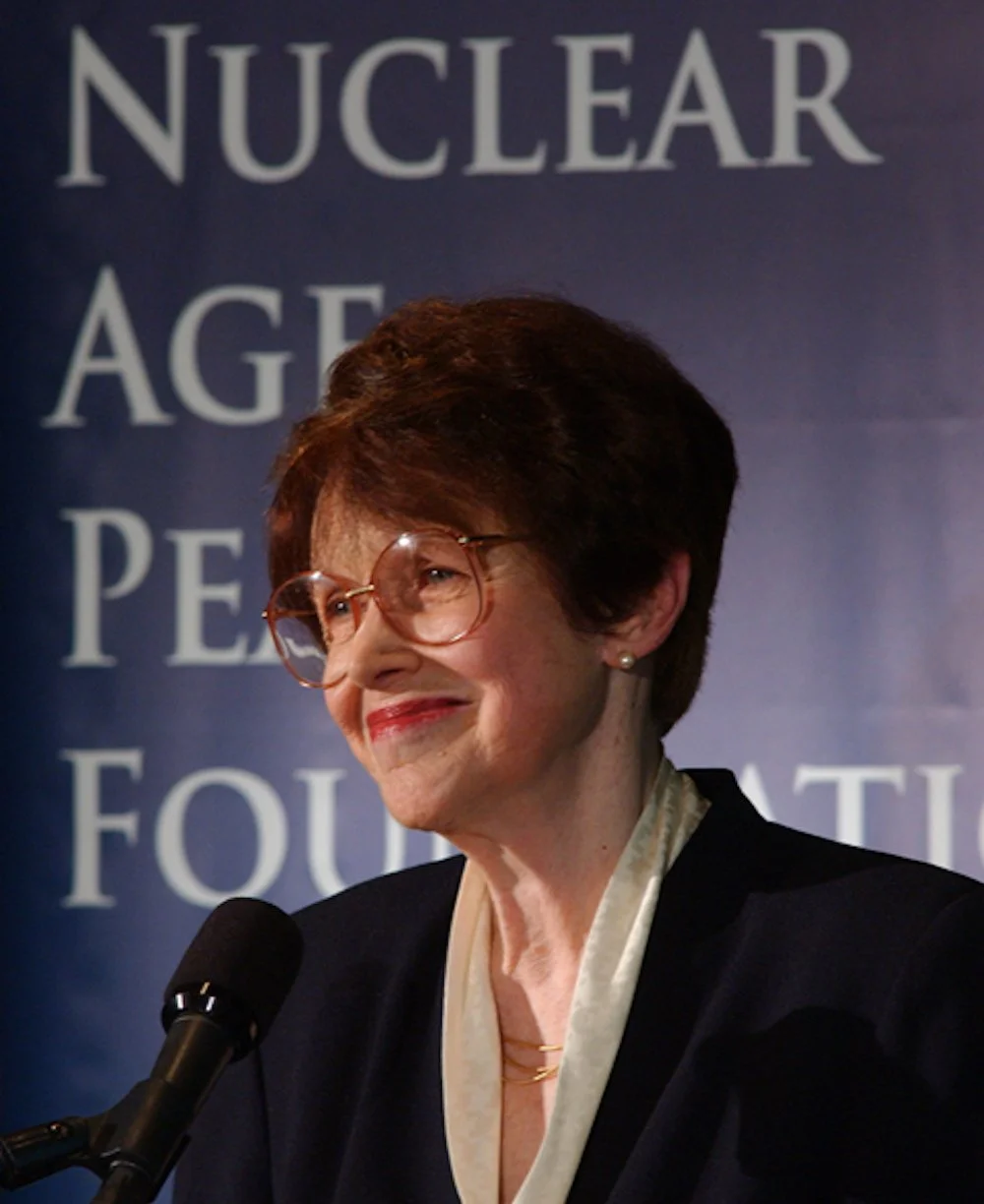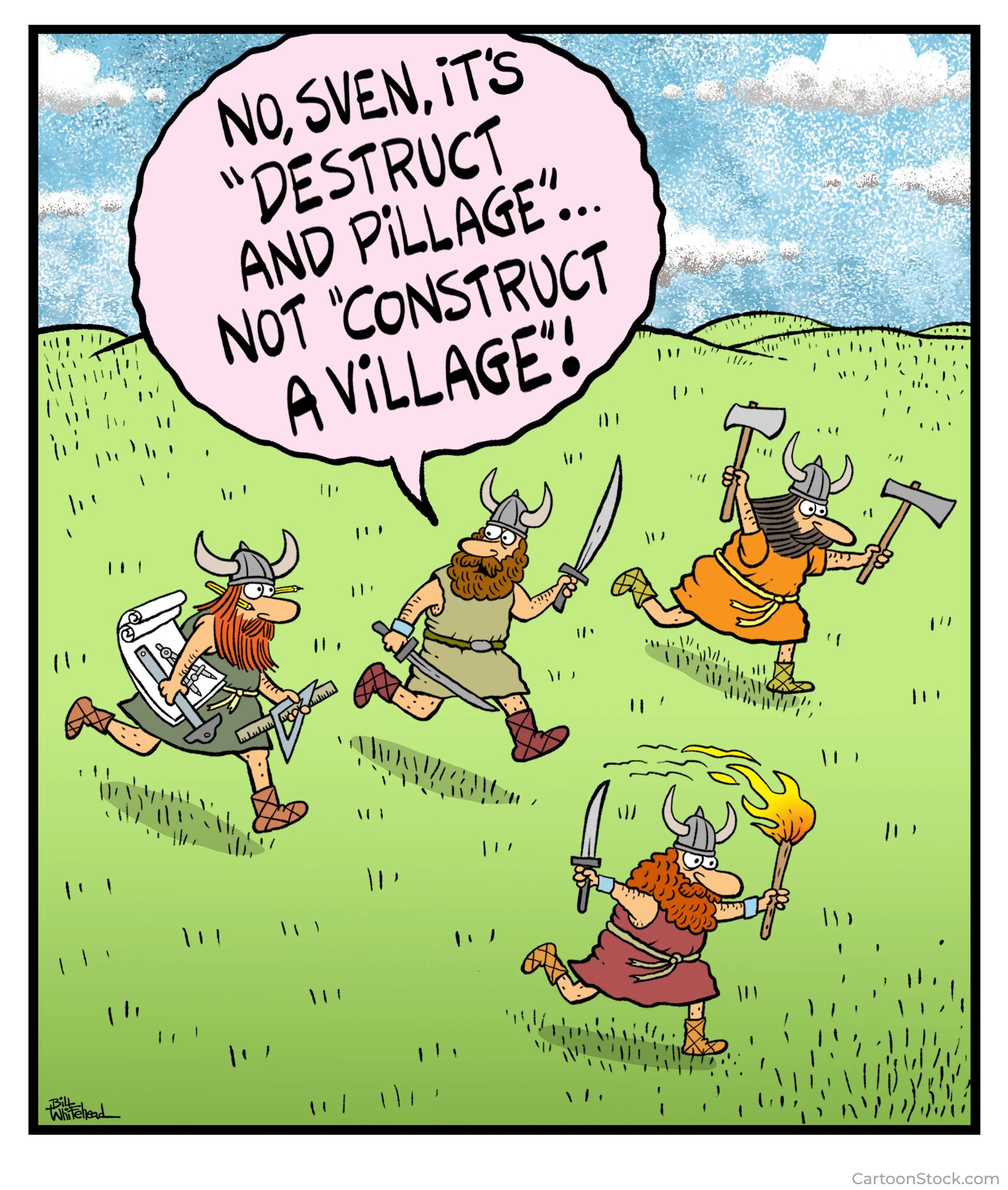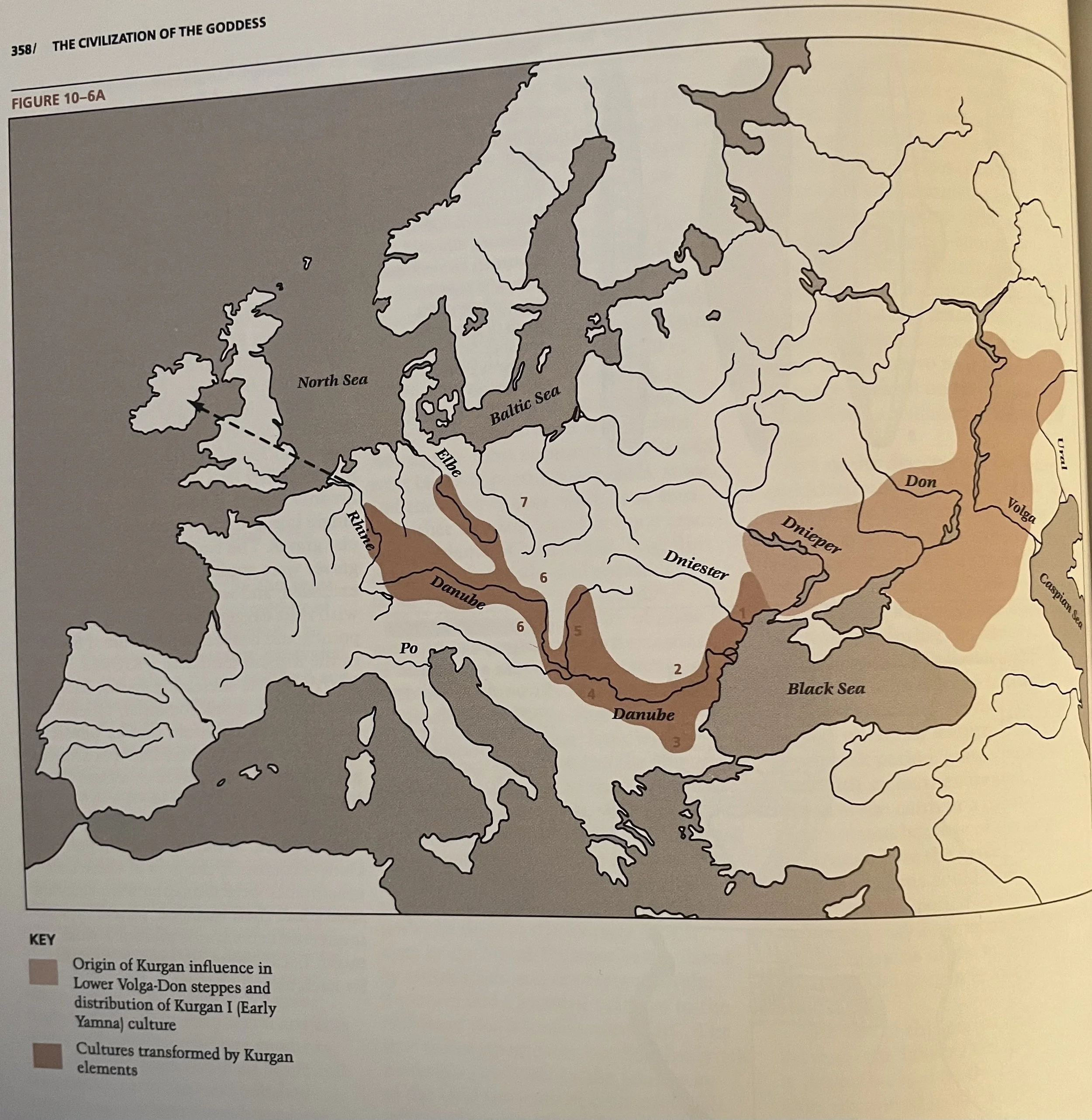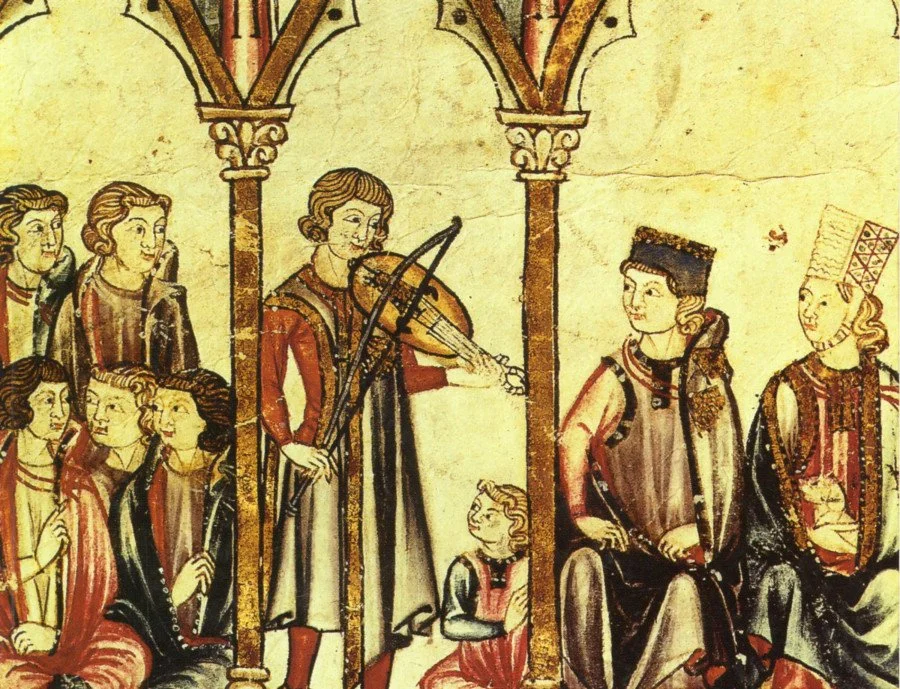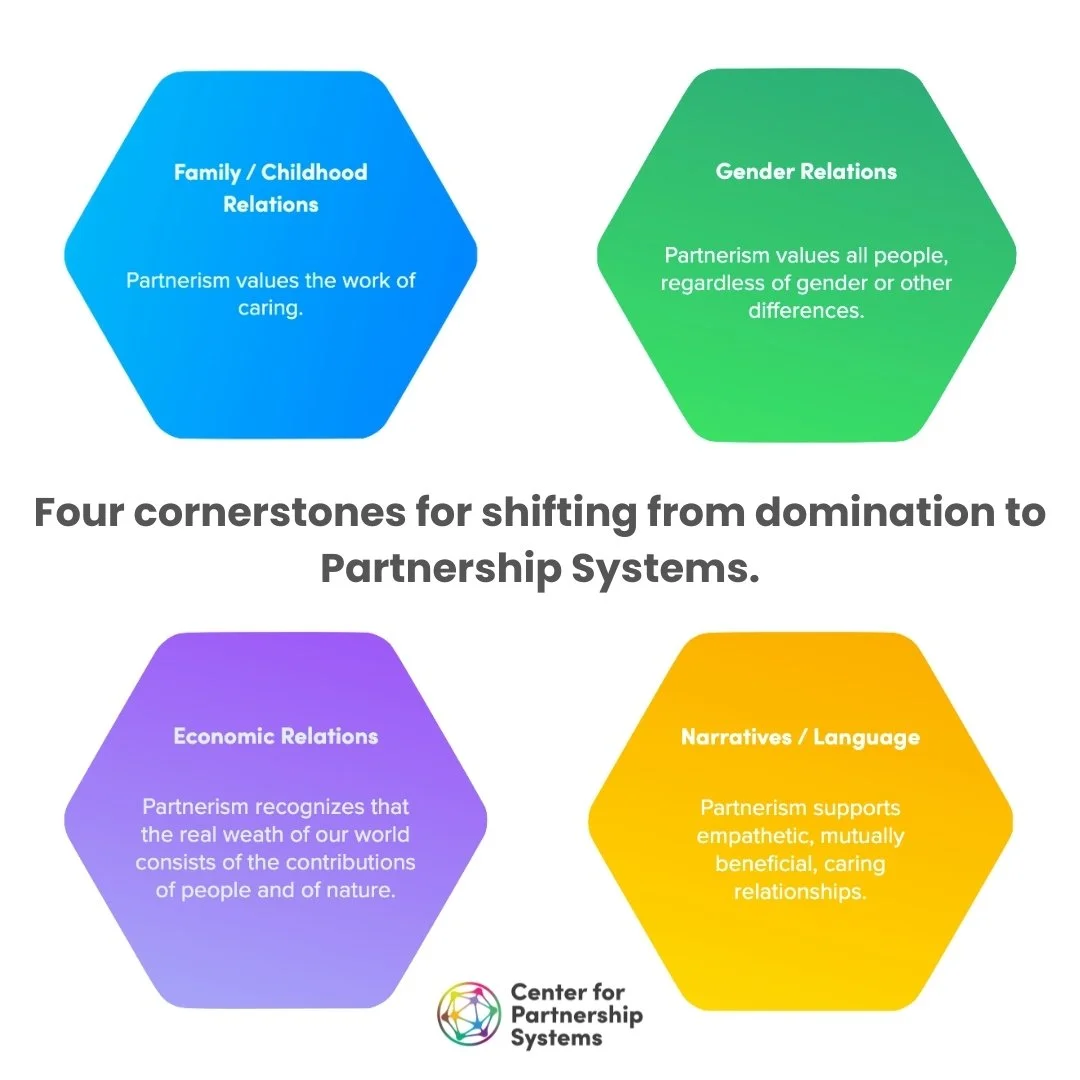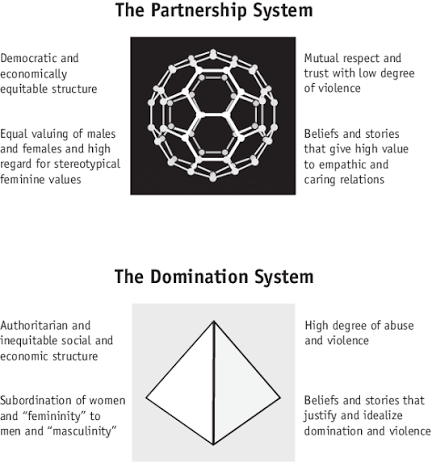~The Way We Were~ ❤️ Back to the Future
Thank you to Louise Connors for inspiring the title:
The Way We Were!
A Neolithic Village
Getting Along in Partnership
From there to the Future
The Partnership Way
My recommendation is to briefly review my last post: “Ready to Be Challenged? ~ The Partnership Way” —specifically for its first section on Riane Eisler, and her book The Chalice and the Blade: Our History, Our Future.
Then ponder these questions:
Where were we 8000 or more years ago?
When we were a peaceful civilization of humans,
Whose basic innate nature was one of kindness and caring and love—writ large?
When everyone belonged? When no one thought they were better than another? And sharing was the way to be?
When we pretty much all got along?
Did that civilization really exist?
Perfectly—maybe not.
Yet it did exist—and there is solid evidence that it did.
And where are we now as a civilization?
When we see crime and cruelty in the world at large—and many people not really getting along—at the very least.
Is that innate nature that once existed on a wide scale still part of us?
We know it is certainly there in many individuals. We have seen it.
We also know that it exists in some small groups of people, even in large groups.
The question is: Can we manifest it now—once again writ large—as the way a civilization knows itself and exists in today’s world?
Can we get back to the “Way We Were.” Can we see it as our future?
Riane Eisler, whom I introduced in my last post, would answer those questions with a YES because she has researched the archeological evidence that such a civilization of humans did exist. And she has developed tools for making a reasonably good effort at getting back to the way we were — back to the future!
In my last post, my aim was to introduce Eisler and her theories. This post aims to flesh them out.
Riane Eisler (1931- ), an internationally acclaimed scholar and systems scientist, cultural historian, futurist, and attorney, is the founder and co-president of the Center for Partnership Systems, which has been active in providing resources and courses that support Eisler’s important research.
Riane Eisler (1931- ) in 2009, the recipient of the Nuclear Age Peace Foundation’s Peace Leadership Award.
Her bookThe Chalice and the Blade is now in 27 foreign editions, in 57 U.S. printings, and is used in universities throughout the world.
Eisler’s extensive research has inspired scholars and social activists and has effected fields that include history, literature, philosophy, art, economics, psychology, sociology, education, human rights, organizational development, political science, and healthcare.
Eisler’s passion for this work is rooted in her early experiences as a child in Nazi-occupied Austria, and then as a refugee living in the industrial slums of Havana, Cuba.
Those profound experiences drove her to ask big questions:
“Why, when we humans have such a great capacity for caring, consciousness, and creativity, has there been so much cruelty, insensitivity, and destructiveness?
Has it ever been different, and can it be different again?”
After careful research, especially of the archeological finds of the 19th and 20th centuries, Eisler developed her Cultural Transformation Theory, in which she holds that underlying the great surface diversity of human culture are only two basic modes of society, and these are:
—Dominator, defined by ranking in terms of superior and inferior—and popularly termed either patriarchy or matriarchy.
—Partnership, defined by linking, identified as caring and gentility or life-giving.
In this two-dyad model, Eisler says, beginning with the most fundamental difference in our species, between male and female, diversity in the Partnership Model is not equated with either inferiority or superiority.
Her CULTURAL TRANSFORMATION THEORY further proposes an astonishing perspective:
—going back to prehistoric times the original direction in the mainstream of our cultural evolution was toward partnership.
Eisler is basically saying that our human nature is naturally geared toward Partnership—toward peace, caring and kindness.
She explains how archeological evidence indicates that our Neolithic civilization was originally flourishing—it was peaceful, advanced in the arts, engineering, agriculture, and much more — and these were mostly created by the women. It was an egalitarian society where women were respected and, in fact, were leaders.
It was also a civilization, in which both women and men understood the Divine as feminine.
Eisler theorizes that given that the inhabitants would have seen that life emerged from the body of a woman, it was plausible that they would have considered the creative powers of the universe in female terms.
~~~Then~~~
As Eisler and others inform us, a major social shift occurred that changed that egalitarian civilization from one of Partnership to one of Domination.
How did it happen?
The shift appears to have occurred by violent takeovers of those Partnership civilizations through a series of invasions by warrior tribes from the outer areas that destroyed the peaceful societies and brought in patriarchy.
Note on the cartoon: While there were invaders from the Scandinavian areas in those Neolithic times, it is interesting to note that today Sweden is hailed as a country with more egalitarian, Partnership aspects than most others.
Eisler offers details about the takeover in Chapter Four of The Chalice and the Blade:
The chapter is entitled: “Dark Order Out of Chaos: From the Chalice to the Blade,” pages 42-58.
Here are some excerpts about the nature of the invaders and the timing of the incursions:
At first it was…the activities of seemingly insignificant nomadic bands roaming the less desirable fringe areas of our globe seeking grass for their herds.
Over millennia they were apparently on the edges of the earth, while the first great agricultural civilizations spread out along the lakes and rivers in the fertile heartlands.
But by the fifth millennium B.C.E., or almost seven thousand years ago, there are the beginnings of [archeological] evidence of what James Mellaart called a pattern of disruption of the old Neolithic cultures in the Near East, [the partnership cultures].
In Old Europe the physical and cultural disruption of the Neolithic societies…also seems to begin in the fifth century B.C.E. with three repeated incursions by what Marija Gimbutas called the Kurgans.
Eisler reports that “there were different groups of invaders from different areas and in different time periods. What seems most definitely to unite these peoples of so many different places and times [is] the structure of their social and ideological systems.
The one thing they all had in common was a dominator model of social organization: a social system in which male dominance, male violence, and a generally hierarchic and authoritarian social structure was the norm.
Another commonality was that, in contrast to the societies that laid the foundations for Western civilization, the way they characteristically acquired material wealth was not by developing technologies of production, but through ever more effective technologies of destruction.
For more details on how the partnership civilization was destroyed and transformed into the dominator model, see Marija Gimbutas, Civilization of the Goddess: The World of Old Europe, Chapter 10; Riane Eisler, The Chalice and the Blade, and Merlin Stone, When God Was a Woman.
Eisler theorizes that if such a change happened once, then it is possible that our civilization can change again—this time from our present Dominator Model to become something akin to the Partnership Model of the civilization we once were.
A Vision of the Future - The Partnership Way, page 96.
HOW MIGHT TRANSFORMATION HAPPEN NOW?
Somewhere in the later pages of her book, Eisler assigned more scientific nomenclature to her two defining words.
She added to the Dominator model the term androcratic (“andro” - Greek prefix for male) and to the Partnership model the term gylanic(“gy” - Greek prefix for woman).
She also elaborated on a term borrowed from the dynamics of systems processes—and which can offer us hope: the concept of attractors.
Attractors in the scientific realm are roughly analogous to magnets. When they pull in aspects of a system, with the right conditions they can cause change in the environment to match the attracters.
Using “attractor” as a working metaphor for the gylanic/Partnership model in a society, Eisler has noted that “all through recorded history, and particularly in periods of social instability, the gylanic/Partnership model has continued to act as a much weaker but persistent ‘periodic’ attractor.
Like a plant that refuses to be killed no matter how often it is crushed or cut back, as…history [has shown] gylany [the Partnership Model] has again and again sought to reestablish its place in the sun.”
Eisler is convinced that the gylanic/Partnership Model is always trying to push through the existing androcratic/Dominator Model in societies worldwide.
There exists a constant tension between the two modes. She points to evidence of attractor-like actions when the gylanic/Partnership civilization has tried to take hold.
She refers to these as “periods of resurgence” and offers the example of the troubadours of the Medieval Age.
In that period, values such as care and concern were evident—the gylanic/Partnership model broke through.
Eisler feels that the present moment we are in is a time when the gylanic environment has the power to break through again—with our help.
Her goal—and it should be ours as well—is to be able to recognize, analyze, and overcome Dominator or androcratic ways present in our own current world—and bring in Partnership or gylanic ways for the benefit of all people.
Significant first steps for us all could be:
—If possible, obtain and refer to the books: The Chalice and the Bladeby Eisler, and its practical companion, The Partnership Way: New Tools for Living and Learning by Eisler and her husband David Loye.
—Check out the websites of Riane Eisler, the Center for Partnership Systems, and the Partnerism Movement.
rianeeisler.com - Riane Eisler’s website
centerforpartnership.org – visit for to learn more about partnership systems and initiatives.
partnerism.org – join our movement to spread the word about Partnerism.
Partnerism is a term for an economic system that supports Partnership-oriented societies.
The Partnerism Movement is an initiative of the Center for Partnership Systems—to make Partnership Systems mainstream, starting with shifting to a caring economics.
First coined by Riane Eisler in The Real Wealth of Nations, the term refers to an economic system that promotes a set of values, assumptions, and beliefs that reward caring for one another, nature, and our collective future.
It recognizes the economic value of care and adequately rewards it in both the market and non-market sectors.
Following are some highlights of Eisler’s resources to start us off on analyses and actions—how we can help with the advancement of Partnerism and accelerate our movement toward becoming a society of Partnership.
We can believe in Eisler’s Cultural Transformation Theory: that change is possible.
Eisler’s research shows that whole-systems change is fundamentally driven by shifts in the configuration of our human-to-human and human-to-Earth relationships, including our families, our language and categories for thinking, as well as our core values, beliefs, and the stories we learn about “human nature.”
We can observe Eisler‘s ”Four Cornerstones.”
Eisler’s work reveals four essential and interconnected cornerstones for shifting away from the legacy of Domination that we’ve inherited and again building the Partnership Systems needed to support human thriving and the survival of our planet:
We can identify—and remain aware of—the Dominator and Partnership modes:
Eisler’s work reveals that the opposite of patriarchy is not, as we have been taught, matriarchy. In other words, if men did not dominate women, women must have dominated men.
In reality, patriarchy’s opposite is Partnership, a system in which neither gender rules over the other and diversity is valued.
We can notice and pay attention to our language, our stories, and our conventional myths:
Partnership Language
How we use language is key in the shift to Partnership Systems.
Domination-based words and phrases have been built into our everyday use of the English language, and influence the way we perceive the world.
The examples below are a sampling of the many phrases that can evolve from a context of Domination to Partnership in our everyday use of language. The arrows point from the Dominator Model to the Partnership Model:
Kill two birds with one stone → Hatch two birds with one egg
I really killed it/crushed it/nailed it → I really brought it to life
I will whip that into shape → I will concentrate on this project
Bullet points → Itemized list
Mankind → Humankind
Together we can become more aware of our use of Domination-based language and begin to consciously choose more caring, non-violent, and race/gender equitable language.
Words and phrases in the areas of politics, economics, organizational development, business, and gender/family relations are particularly applicable.
By Stefano Mercanti, University of Udine, Italy, including The Language of Partnership, by Riane Eisler
Stories and Myths in the Dominator mode similar effects on a society.
The Judeo-Christian Bible
The Hebrew Testament
In the early 1980s, Netta, a close friend of mine with whom I was working on a project, and who was a Jewish scripture scholar, surprised me when she pointed out that in the Hebrew texts, God/Yahweh is depicted as angry and punitive early on.
As the texts of the books of the Hebrew Testament progress, Yahweh is shown to be less and less angry and punitive.
As the texts of the books of the Hebrew Testament progress, Yahweh is shown to be less and less angry and punitive.
We do know that the Scriptures were written by men and these men wrote of God in a particular image—seemingly it was, in many aspects, in the image of themselves.
Eisler declares that much of the Hebrew Testament is written in the androcratic/Dominator Model.
However, she does explain that there are breakthroughs of the gylanic/Partnership model within the texts. For example, in Hebrew mysticism the Divine is referred to in the feminine, as Shekhinah.
I would also include the gylanic/Partnership words of Hannah in 1 Samuel 1:1-10, especially verse 8a:
“He raises up the poor from the dust; he lifts the needy from the ash heap, to make them sit with princes and inherit a seat of honor.”
I have an exercise, which is my attempt at applying partnerism to Creation, the first story in the Book of Genesis.
I will, however, save it as its own subject for the next post.
The Christian Testament:
Riane Eisler devotes Chapter 9, pages 120-134, of The Chalice and the Blade to Jesus.
She says that “Jesus’ teachings embody a gylanic [or Partnership] view of human relations.”
What he was preaching, she declares, was “the gospel of a partnership society.”
She continues with: “… The cornerstone of dominator ideology, the masculine-superior/feminine-inferior species model is, but for a few exceptions, conspicuous in its absence in the gospel writings. Instead, permeating the writings is Jesus’ message of spiritual equality.”
“Jesus did not preach the ultimate dominator message: that women are spiritually inferior to men.”
“Even more striking,” she says, “—and all-pervasive—are Jesus’ teachings that we must elevate “feminine virtues'“ from a secondary or supportive to a primary and central position. We must not be violent but instead turn the other cheek; we must do unto others as we would have them do unto us; we must love our neighbors and even our enemies.
Instead of the “masculine virtues” of toughness, aggressiveness, and dominance, what we must value above all else are mutual responsibility, compassion, gentleness, and love.”
I have wondered for some time now if Jesus’ support of women was a prescription for death?
With her theri’s on Partnerism, Riane Eisler has given me a new vocabulary for my musings.
I would like to share an essay I wrote eleven years ago. Eleanor Rae reprinted it on the front page of her Summer 2014 edition of WEAVING THE CONNECTIONS: The Newsletter of the Center for Women, the Earth, the Divine. I believe it is relevant to our work here.
JESUS MEETS THE WOMEN
by Anne Andersson, 2014
My first experience of injustice came in kindergarten. I had just finished building a road with those big, wonderful blocks that kindergartners had available to them in those long ago days. I was ready to try out my road with a toy car when my joyful absorption was shattered suddenly by one of the boys who smashed my masterpiece. As one who had had virtual free reign over my toys (favorites were a doll and carriage and a cuddly lamb) at home with only a ten-month old sister, I was bewildered by the event. I told my teacher, expecting justified recompense—at the very least a scolding to the offender. And nothing happened—no scolding—just a call to the class to line up for dismissal. The event still stings. Was it the frustration of a teacher trying to get the class out on time? Was it related to the fact that I was a girl playing with blocks? Or that the boy’s action was considered a harmless “boys will be boys“ kind of thing—perhaps even a love tap at five years of age? Today, I am a teacher myself, and one who has taught children of many ages—from age three through college—as well as adults. Were I to have been faced with a similar situation in today’s pre-school, I would have, without hesitation, called the two to a peace table, ASAP, and addressed the action, most especially with the offender. But, then again, perhaps in today’s world, such a scene would not have occurred in the first place.
In later years, evidence of injustices, particularly toward women, continued to draw my attention. I became somewhat well-versed in the rhetoric of the mid-19th century feminists and was especially intrigued by Elizabeth Cady Stanton’s charge that the Bible was often used as a source of oppression for women. Her book The Woman’s Bible (1895) serves as a beacon of evidence of the male-centric nature of the verses within. In my own lifetime, I was electrified and enlightened by the resurgence of the women’s movement in the 1960’s and 70’s. My greatest interest came about when I was introduced (even before I began to study theology in a degree program at Fordham University) to the feminist theologians who were writing in the 1970’s and 80’s. Two in particular stand out: Mary Daly with her book GYN/ECOLOGY (1978) and Elisabeth Schüssler Fiorenza and her groundbreaking book In Memory of Her (1983). Through these works I came to new views. Daly’s statement of the world of patriarchy was paradigm-altering for me: “Patriarchy is itself the prevailing religion of the entire planet.” (p. 39). However, Schüssler Fiorenza’s analysis of the New Testament, in which she stated that “…not one story or statement [in the Gospels] is transmitted in which Jesus demands the cultural patriarchal adaptation and submission of women” (pp. 52-53) was, to me, clearly awesome!
And so I began to think of Jesus and his world in a new way. Patriarchy, at least a five thousand-year old social structure of male domination of women, children and weaker men, was very much in play in his time. Some theorists have pointed out the surprising fact that not only are women mentioned in the New Testament stories, but they are mentioned quite often—unusual in such a male dominated society. Gradually, then, I began to formulate my own theory that perhaps there might have been a very particular focus to the radical views of Jesus Christ. Consider: the woman caught in adultery, the Samaritan woman, the women at the tomb, the woman at Bethany who washed his feet with her hair (the inspiration for the title of Schüssler Fiorenza’s book) to name just a few.
Consider also the women of the Passion story, particularly the fact that of the 14 Stations of the Cross, three are focused on events that include women. Check out the video, “The Stations of the Cross with Father Reed,” from Catholic TV (https://youtu.be/tLGwLMLcq8k)
Fr. Reed’s reflection on the 8th Station – “Jesus meets the women of Jerusalem” – is particularly significant in that he says: “The women of Jerusalem and their children come out to comfort and to thank Jesus. They had seen his compassion and welcomed his words of healing and freedom. He had broken all kinds of social and religious conventions just to connect with them. Now they’re here to support him. He feels their grief. He suffers, knowing he can’t remain to help them any more in this life.”
Surely within a patriarchal society based on woman as property, to challenge the place of women in that world—to specifically attempt to right that injustice—could very well be enough to get a person killed.
For another viewpoint on Jesus and women: in his book, A Call To Action (2014), former President Jimmy Carter quotes the Rev. Dr. Alison Boden, an ordained minister in the United Church of Christ and Dean of Religious Life, Princeton University. She states: “The Gospel of Jesus Christ has at its center the ending of domination of every kind. …The ending of the subordination of women—and of all who are dominated—is critical to the building of the reign of God on earth as it is in heaven.” (p. 24).
Jesus was surely all about eliminating exploitation and injustice. The question I am raising is: was he doing so by focusing first and foremost on the plight of women as its cornerstone?
IN YOUR OWN WORDS:
Preview of Current Post: “~The Way We Were ~ 🩷 Back to the Future” Written by Anne Andersson, October 17, 2025
Well done! 👍 —MA
Previous Post: “Ready to be Challenged? ~The Partnership Way” Written by Anne Andersson, October 10, 2025
—The words in this post really resonated in me! Dominator & Partnership! We know which one is active today. How to reverse it? To the “Way We Were!” —LC
—Much food for thought. —ER
C:WED’s New Section:
WOMEN SPEAK OUT.
BELIEVE THE WOMEN.
Listen! Hear! Believe!
REMEMBER THE SURVIVORS:
—WHO ARE TODAY’S WOMEN
—SOME OF WHOM WERE YESTERDAY’S GIRLS
—WHO WERE THE CHILDREN OF THE ABUSE.
Missing from governmental discussions of the Epstein/Maxwell pedophile and trafficking of girls and women story have been the voices of the survivors. WE WILL HIGHLIGHT ONE SURVIVOR IN EACH POST.
TODAY’S FEATURED SURVIVOR: TERESA HELM
https://youtu.be/5A7cDSez1AYsi=PC6UyecwuF4mRMo9
Teresa Helm, an Epstein survivor, recounts being groomed by Ghislaine Maxwell at age 22. Helm was approached by recruiters and flown to New York to interview with Maxwell.
Maxwell built trust by connecting with Helm emotionally and making her feel like she belonged, a tactic Helm now recognizes as grooming.
Helm describes being a student working full-time when she was approached by a fellow student who introduced her to Sarah Kellen. Kellen described a job opportunity working for Maxwell, and Helm was flown to New York to interview.
During the interview, Maxwell was polite, kind, and articulate, making emotional connections with Helm by relating to her personal life and experiences. Maxwell made Helm feel like they had a lot in common, building trust and making her feel like she belonged. This, Helm explains, was a calculated part of the grooming process to build trust. She was then introduced to Epstein and subsequently assaulted.
Helm stresses the need for transparency and the release of files related to Epstein's crimes. She believes these files will reveal the extent of the exploitation and the individuals who enabled it. Helm also expresses skepticism about Ghislaine Maxwell's credibility as a witness, given her history of perjury.
Helm advises women to be aware of grooming tactics, such as promises that seem too good to be true, being showered with gifts, and attempts to isolate them. She urges women to trust their instincts and stand their ground when faced with potentially dangerous situations.
For more about this subject:
The 2020 Netflix original, four-part docuseries, Jeffrey Epstein: Filthy Rich, presents a detailed account of Epstein’s abuse and those who enabled him. Survivors also share their own stories.
C:WED WISH LIST:
This post —ALMOST—marks the completion of our in-depth study of Ecofeminism, which we began in February 2025.
I do have one last piece: an addendum with my own attempt at doing “Partnerism”.
The post will also feature another Epstein survivor and her story.
Thank you so much for traveling with us!
After the addendum, we will revert to a more leisurely publishing time frame, that is, posting on a variety of topics as they arise. We will cover more general topics of choice while remaining within our framework of Women, the Earth, and the Divine.
Perhaps you might suggest a topic for the C:WED blog.
We would love to hear from you!
And we thank those who have already suggested topics!
—Please do send your suggestions to: info@cwed.org
—PLEASE keep reading our posts! Share their views.
—PLEASE spread the word about us!
Share our website with your friends, relatives, and colleagues: www.cwed.org
